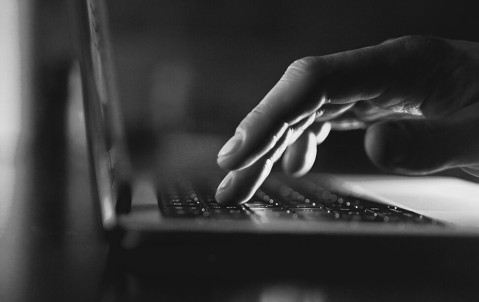- 40% of art collectors anticipate that more people will buy AI-generated art
- 82% of art collectors and over three-quarters (76%) of enthusiasts would like to see clearer distinctions between AI-generated art and man-made content
- Both older art collectors (69%) and younger collectors (67%) consider AI-generated art to be less important than human creativity
Latest research from specialist insurer Hiscox explores the future for producing and collecting AI-generated art, and shows that a new generation of collectors is likely to pave the way for AI-generated art
London, UK (19 September 2024): Demand for AI-generated art is set to increase over the next 12 months according to new research published today by Hiscox.
The Hiscox Art and AI Report (link), which examines art collectors’ and enthusiasts’ views on AI-generated art, shows that 40% of art collectors anticipate that more people are likely to buy these works. Art enthusiasts* are more optimistic, with over two-thirds (67%) predicting AI-generated art sales are likely to pick up.
The growing demand for AI-generated art is being fuelled by new and emerging buyers, with over a quarter (28%) having purchased AI-generated art and 52% saying they are expecting to do so. This is likely to be due to the popularity of AI models that generate images from prompts, such as Stable Diffusion, Midjourney and DALL·E, as well as a growing number of websites and artists selling AI-generated art either as a physical artwork or as an NFT. In contrast, only 2% of seasoned collectors have bought AI-generated art, while 29% might consider doing so.
Robert Read, Head of Art and Private Clients at Hiscox, said: “Artificial Intelligence is all around us, and the art market is no different. Our report is a first step in understanding the reaction from experts in the market to the arrival of AI-generated art, and what this might mean for the future. Can AI-generated art really replicate the emotional journey that is a necessary part of the human creative process? Or is there a future where both human and AI-generated works co-exist in harmony? Ultimately, only time will tell, but it’s clear that for now there is interest in the potential for AI-generated art from a whole segment of current and future collectors.”
There are still hurdles to overcome if AI-generated art is to become widely accepted. Seasoned collectors remain sceptical: only 16% believe that AI-generated art could reach the same price levels as traditional human-created art, compared to 26% of new buyers and 56% of art enthusiasts. Issues of copyright and legal ownership continue to be a hotly debated topic, with 82% of art collectors and over three-quarters (76%) of enthusiasts calling for clearer distinctions between AI-generated art and man-made content.
In addition, while most collectors still view AI-generated art as inferior to man-made art, a large majority of both older art collectors (69%) and younger collectors (67%) consider AI-generated art to be less important than human creativity. However, only 44% of new collectors share this view, with 26% rating AI-generated art as equally important as traditional mediums such as paintings, sculpture, and photography.
The 2018 sale of Edmond de Belamy, from La Famille de Belamy, by Paris-based collective Obvious achieved a record-setting $432,500 at Christie’s in London and marked a pivotal moment for AI-generated art. Although the auction market has been inconsistent since, this year has seen some revived interest with auction sales of works by Refik Anadol, Sougwen Chung, Harold Cohen, Obvious, Claire Silver and Roope Rainisto.
There is also an uptick in museum space dedicated to artists working with AI. In 2024, this includes exhibitions of Harold Cohen’s work at the Whitney Museum of American Art in New York, Ian Cheng at the Foundation Beyeler in Basel, Vera Molnár at Centre Pompidou in Paris and Refik Anadol at London’s Serpentine Gallery.
Ends
For further information please contact:
Carmel McCarthy – [email protected] 07769 280903
Lucy Hensher – [email protected] 07824 996370
Notes to editors
The Hiscox Art and AI Report research is based on over 400 responses from surveys carried out between April and June 2024 with both art collectors and art enthusiasts. The research was collected by ArtTactic, a specialist art market research and analysis firm.
*Art enthusiasts - a more general audience who express a broad interest in art.
About The Hiscox Group
Hiscox is a global specialist insurer, headquartered in Bermuda and listed on the London Stock Exchange (LSE:HSX). Our ambition is to be a respected specialist insurer with a diverse portfolio by product and geography. We believe that building balance between catastrophe-exposed business and less volatile local specialty business gives us opportunities for profitable growth throughout the insurance cycle.
The Hiscox Group employs over 3,000 people in 14 countries, and has customers worldwide. Through the retail businesses in the UK, Europe, Asia and the USA, we offer a range of specialist insurance products in commercial and personal lines. Internationally traded, bigger ticket business and reinsurance is underwritten through Hiscox London Market and Hiscox Re & ILS.
Our values define our business, with a focus on people, courage, ownership and integrity. We pride ourselves on being true to our word and our award-winning claims service is testament to that. For more information, visit www.hiscoxgroup.com.
For more information, visit www.hiscoxgroup.com.
About ArtTactic
ArtTactic is a London-based art market research and analysis firm that offers dynamic and responsive research and commentary on the fast-paced and ever-changing art market. ArtTactic was founded in 2001 by Anders Petterson. ArtTactic has been a pioneer in developing industry research and analytical tools for the global art market. ArtTactic provides a new dimension to art market analysis by combining both qualitative and quantitative research tools with an in-depth knowledge of how the art market works. ArtTactic’s weekly art market research and analysis can be accessed via www.arttactic.com.
All press releases


